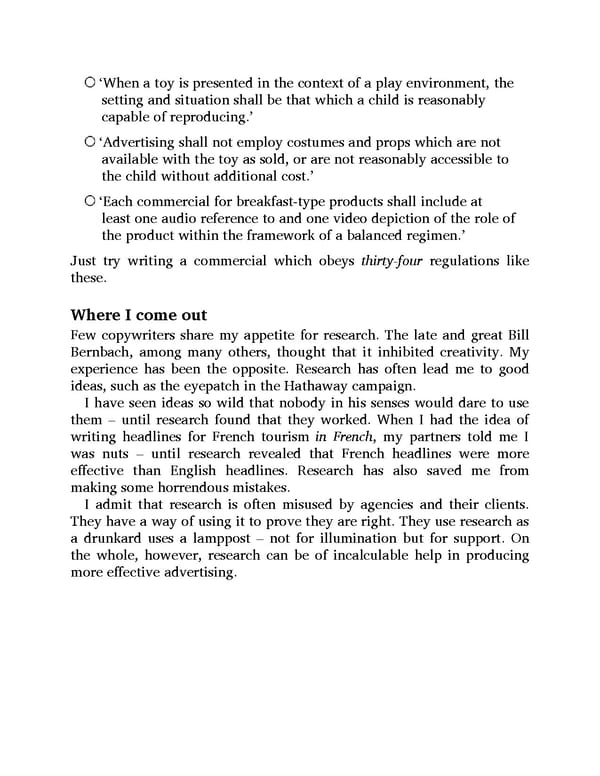‘When a toy is presented in the context of a play environment, the setting and situation shall be that which a child is reasonably capable of reproducing.’ ‘Advertising shall not employ costumes and props which are not available with the toy as sold, or are not reasonably accessible to the child without additional cost.’ ‘Each commercial for breakfast-type products shall include at least one audio reference to and one video depiction of the role of the product within the framework of a balanced regimen.’ Just try writing a commercial which obeys thirty-four regulations like these. Where I come out Few copywriters share my appetite for research. The late and great Bill Bernbach, among many others, thought that it inhibited creativity. My experience has been the opposite. Research has often lead me to good ideas, such as the eyepatch in the Hathaway campaign. I have seen ideas so wild that nobody in his senses would dare to use them – until research found that they worked. When I had the idea of writing headlines for French tourism in French, my partners told me I was nuts – until research revealed that French headlines were more effective than English headlines. Research has also saved me from making some horrendous mistakes. I admit that research is often misused by agencies and their clients. They have a way of using it to prove they are right. They use research as a drunkard uses a lamppost – not for illumination but for support. On the whole, however, research can be of incalculable help in producing more effective advertising.
 Ogilvy on Advertising Page 237 Page 239
Ogilvy on Advertising Page 237 Page 239